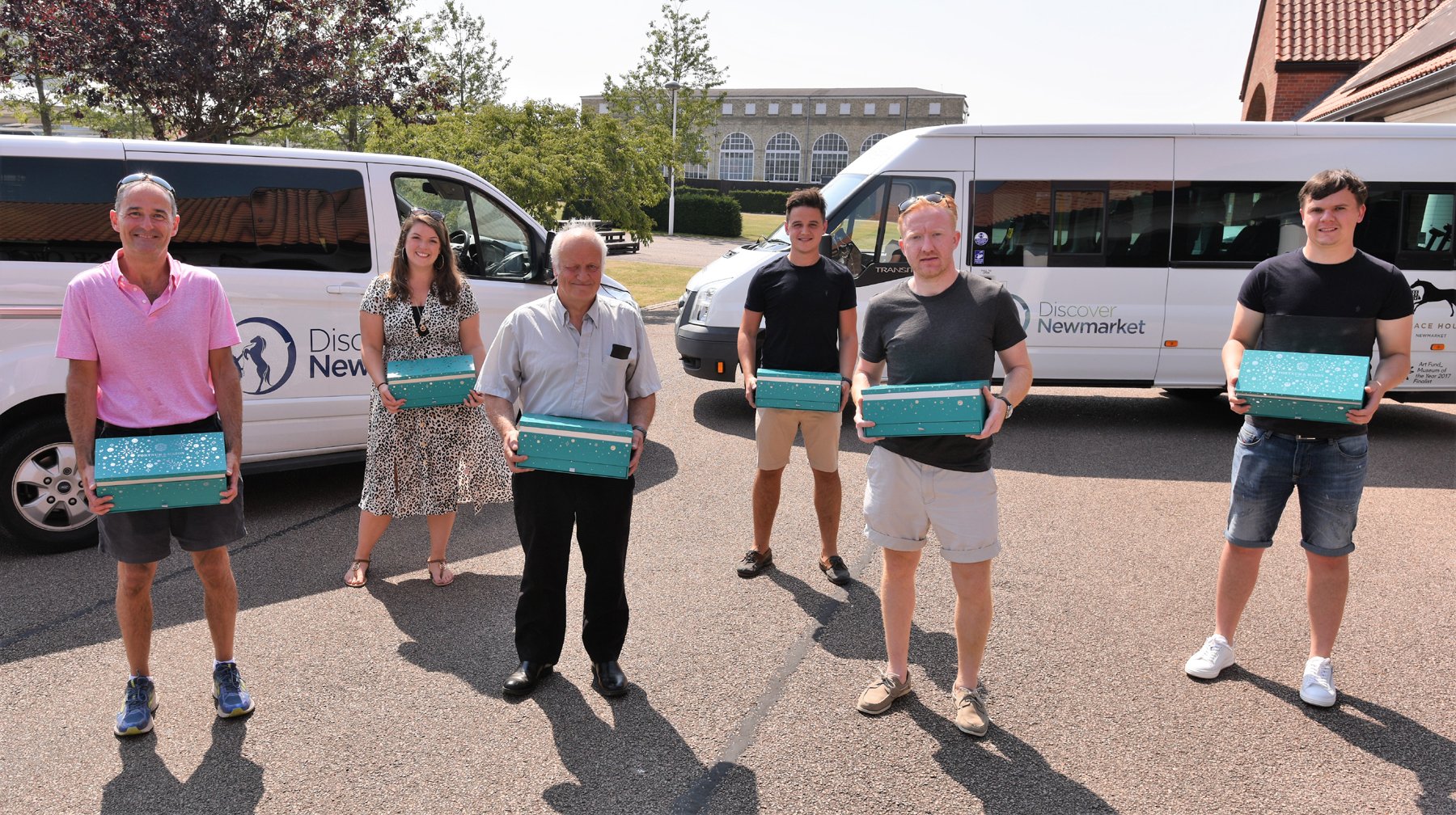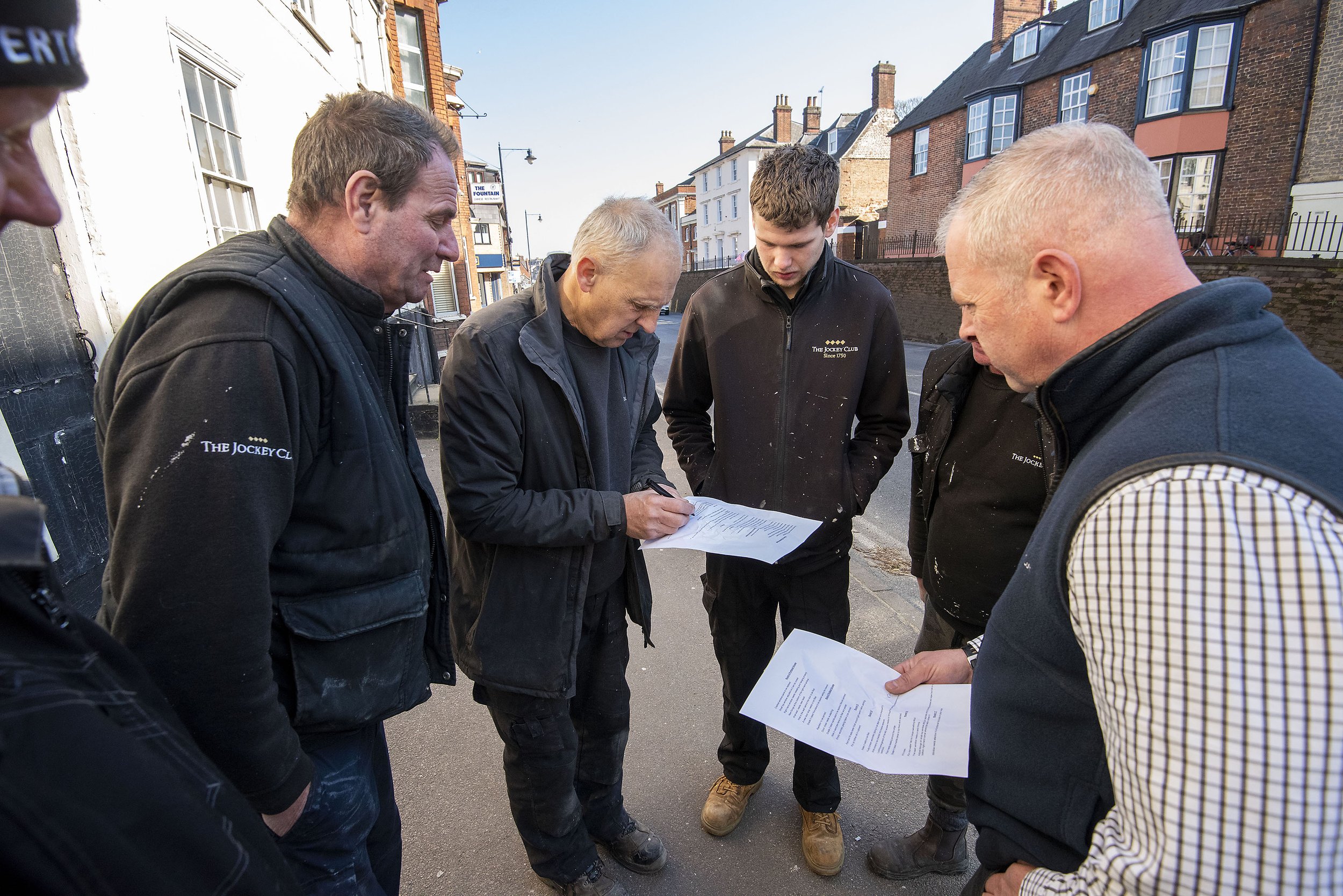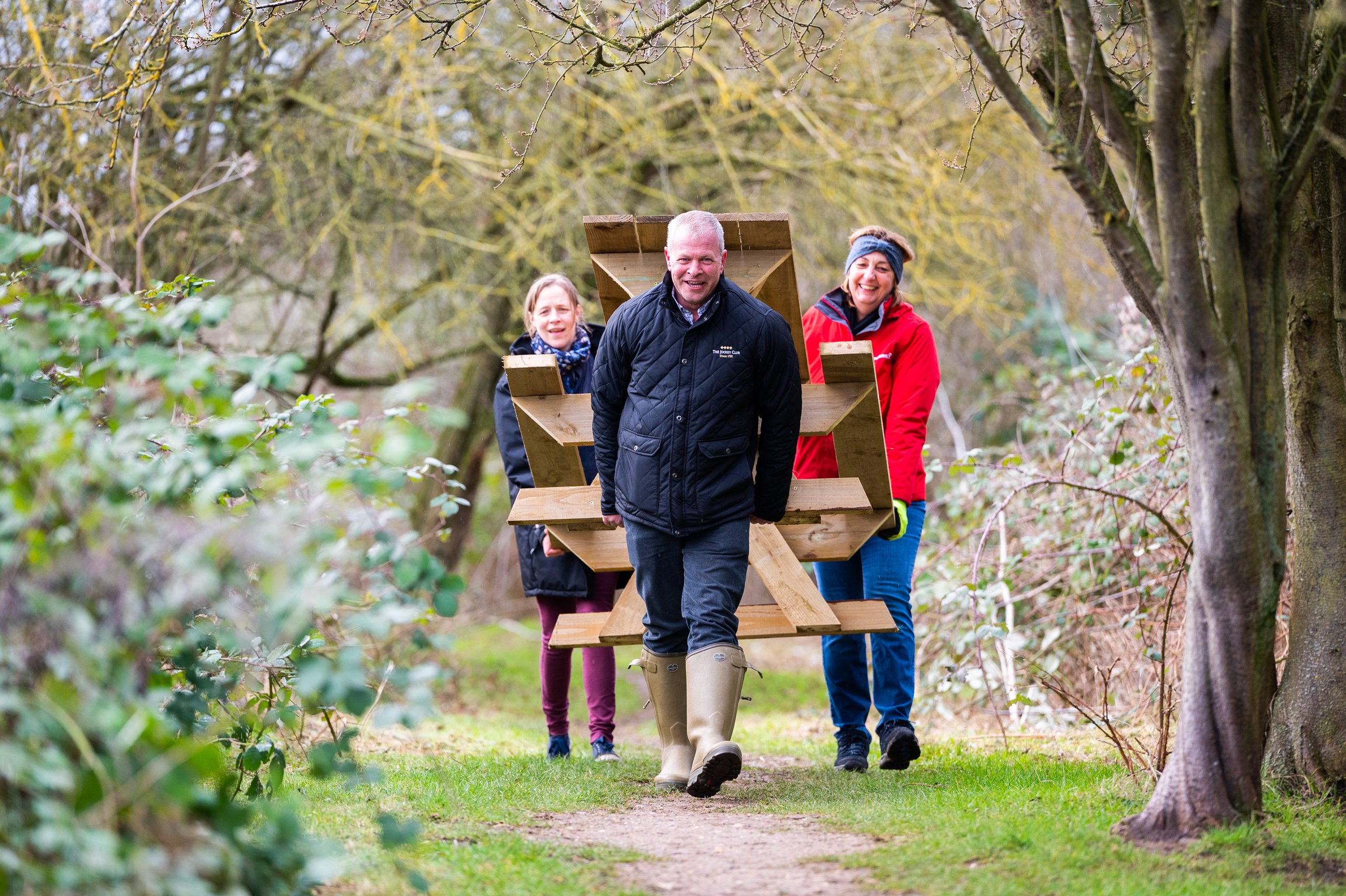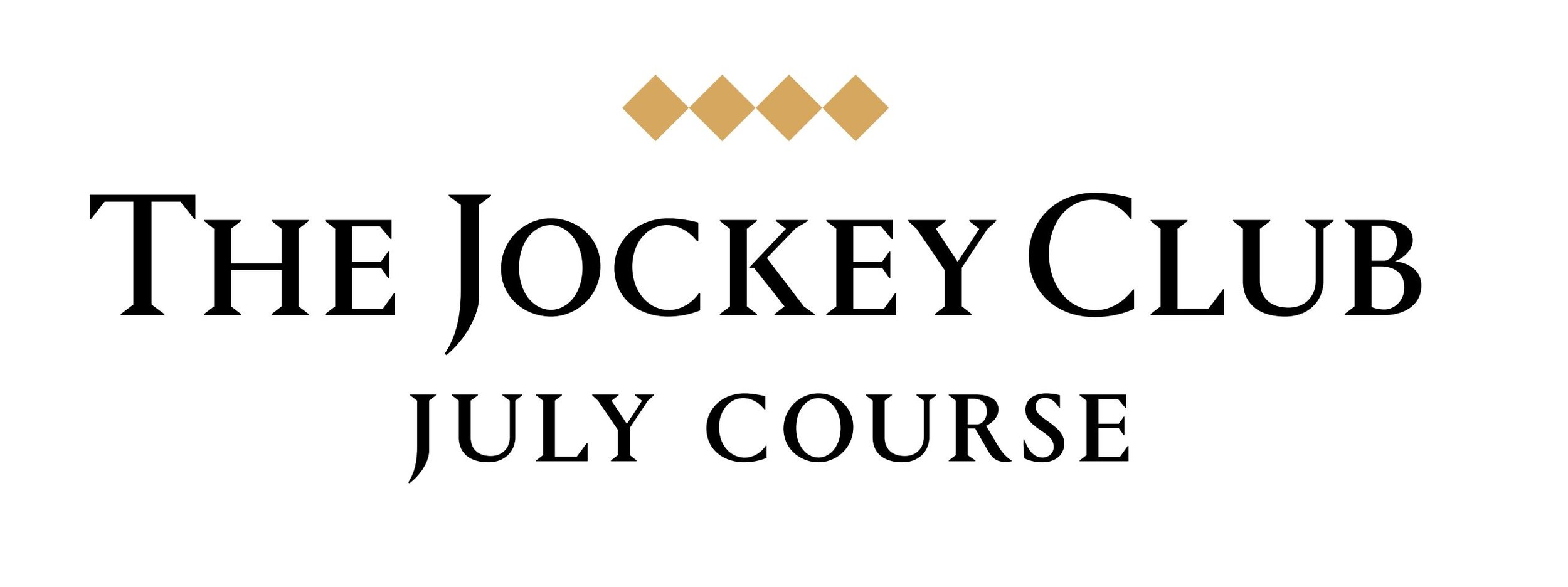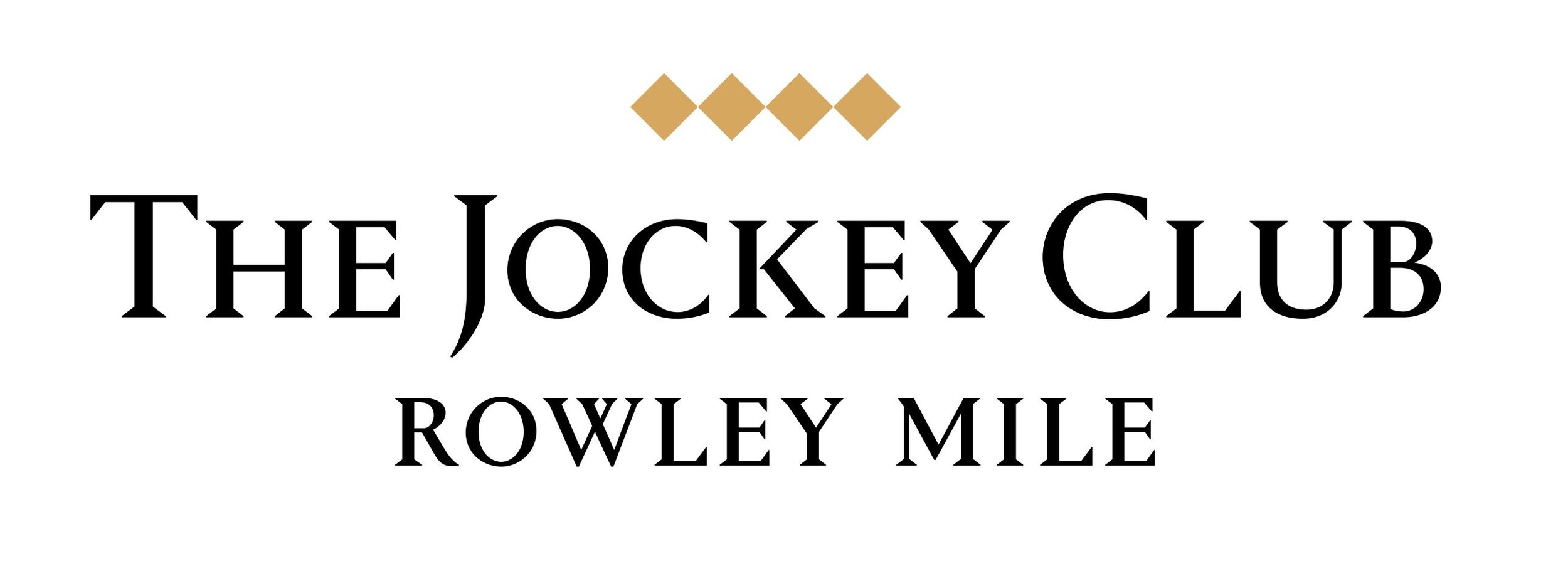IN THE COMMUNITY
Our involvement in community and charitable activities in Newmarket has the single aim of making a positive impact to Newmarket as a whole.
Whether it’s a collaborative role in some of the large number of ongoing community projects or using our own resources and expertise, we enjoy playing our part.
Our community work has taken many different forms over the years, and continues to evolve to match the ever changing needs of Newmarket and its residents.
Examples include support of the ongoing education programmes in conjunction with Godolphin at local primary schools and the Newmarket Academy, as well as being involved in improvements to the Memorial Gardens.
More recently, during the pandemic organisations from right across Newmarket came together to support the town and its residents. This included setting up helplines, delivering food parcels and organising a Christmas parade.
“For as long as The Jockey Club is in Newmarket we will remain committed to contributing positively to the community”
Educating children on road safety.
Clearing and improving the community orchard
The relationships and positive momentum created during the last few years has continued, with recent projects including:
Improve the Yellow Brick Road,
Clearing the Community Orchard,
Partnering with Newmarket Open Door
Supporting the grassroots teams of Newmarket FC
We have plenty more projects in the pipeline and for as long as The Jockey Club is in Newmarket, we will remain committed to contributing positively to the community. Our community work also extends to longer term initiatives to help the town, such as being involved in an exciting new initiative called The Newmarket Charitable Foundation.
INTRODUCING THE
NEWMARKET CHARITABLE FOUNDATION
Dear Neighbours and Colleagues,
I am pleased to take this opportunity to introduce The Newmarket Charitable Foundation (NCF) which is bringing together local businesses and the community to make Newmarket a thriving place to live, work and visit.
The NCF is not new. It is an evolution of the Newmarket Festival, a Community Interest Company (CIC) established over 12 years ago, raising substantial sums of money for a wide range of local good causes.
The NCF, which is registered with the Charity Commission, will raise funds for, and support the delivery of, a number of projects in Newmarket that have the potential to transform our town.
Success will be the result of a long-term commitment from local business partners, helping to fund, and working alongside the community, to drive significant improvements in three key areas:
1. Community - including the relief of hardship and investment in arts, culture and sport
2. Education
3. Town Infrastructure
The Newmarket Charitable Foundation (NCF) aims to be a primary catalyst for true, sustainable, transformation across Newmarket.
It will be an ‘enabling’ and ‘doing’ organisation with an approach and visible roll-out which creates impact – on the ground, with a broad range of people.
It will also be a trusted facilitator for the community, working alongside partners and existing initiatives to create a thriving town with great opportunities for all.
The NCF’s Board of Trustees include:
Sarah Howard
Chair, British Chamber of Commerce
Chair, Abbeycroft Leisure
Chair, West Suffolk Alliance
Noel Byrne
Chief Executive, Bedford Lodge Hotel & Spa
James Crowhurst
Newmarket Equine Hospital
Rachel Flynn
Partner, Keystone Law
Kevin Hancock
Yutree Insurance
Laraine Moody
Vice Principal Strategic Growth & Partnerships West Suffolk College
Nick Patton
Managing Director, Jockey Club Estates
I very much hope you will support the Newmarket Charitable Foundation, and in doing so, you will be supporting a thriving Newmarket for the whole community.
I look forward to sharing our website, along with more information on how to get involved, later this Spring/ Early Summer.
Dr David Hall,
Executive Director
Newmarket Charitable Foundation
Creating a thriving Newmarket for the whole community
A CINEMA AT THE
SUBSCRIPTION ROOMS
Concept for a new entrance to the Cinema from the High Street
When the residents of Newmarket are asked what they most want to see in the town, a cinema is always near the top of the list.
As part of a series of concepts we are sharing today, and playing our part in enhancements to the town, we have been considering whether The Subscription Rooms, which used to house the Horseracing Museum, could be converted to a cinema.
Were this to happen, the required funding, construction and ongoing management of the finished facility would be carried out by third parties.
Given the desire for a cinema within the town and the boost that this location would bring to the High Street we are keen to explore it further, but we want to hear your views.
Concept
As the former use of the location in question was a museum, it lends itself towards conversion for another community use.
The proposed concept would involve the conversion of existing buildings, with some additions, in order to create a three-screen cinema.
The vision for the facility would be to include small, medium and large screen rooms ranging from 38 to 115 seats in capacity.
Initial ideas for the ground floor would be to house a box office and lobby as well as café and gallery space and access to all three screens. A rear courtyard and garden could provide outdoor space.
The first floor would see in-house office space as well as the opportunity for publicly accessible co-working facilities.
The larger and medium sized screening rooms would require extensions to the existing buildings, but this could be delivered without impacting on the high street and current retail units.
We are keen to hear feedback on this idea, which remains purely conceptual at present.
Proposed Internal Foyer: As a listed building, the designs are subject to discussion with Historic England which have not yet taken place at the early stage. These would inform any final design.
A NEW PARK
FOR NEWMARKET
Although at first glance Newmarket is not short of green space, much of it is used for training which means there are time constraints on public access.
The Jockey Club has a parcel of land that could work as a dedicated community park, for those who live, work and visit Newmarket.
A new park for Newmarket is proposed on the large hill and lower marsh of the Seven Springs site, which takes advantage of some existing natural features.
This park would become a primary part of Newmarket’s green space network with access available to all.
A new road off Exning Road would provide access and the existing cycle network would link to new trails within the park.
A trail network would loop through the existing woodland, natural springs, and an enhanced wetlands, with a number of seating features and rest points en route.
A small community barn or café would be at the highest point of the park, providing a key vantage point, and a children’s playground is also proposed.
A number of archaeological features have been documented on this site and it’s proposed that these would form part of a heritage trail with interpretation points indicating what they are and where they stood.
These are our initial ideas for the park at this site and we hope that this forum will stimulate further ideas for what might be provided here.
Hamilton Hill
It is proposed that the housing allocation, currently earmarked for Hamilton Hill, is relocated to Pinewood. Options are being considered for this area, although any concepts would look to retain the existing racing facilities in this area.
Access to the gallops would continue to be restricted until 1pm, when training is finished.
The proposal for the park creates access and enhancement to natural site features including views over the Heath in the distance.
The design concepts below show how the site could be transformed to greatly enhance the public open space on offer in the town.
An artists impression of a new community facility for a community cafe and lookout point over the park.
“This park would become a primary part of Newmarket’s green space network with access available to all”
POTENTIAL RESIDENTIAL DEVELOPMENT
In 2020, the housing supply shortfall in Newmarket was the most significant of any town in England. There are currently not enough homes in Newmarket for the number of people who work here, which means a high level of commuter traffic into the town.
The housing shortfall is one of a number of issues being addressed by West Suffolk District Council in its Local Plan process.
In the longer term, the expansion of Cambridge to the east of the city, poses a risk to Newmarket’s ability to thrive, in its own right, whilst maintaining its unique way of life.
We believe that Pinewood provides the most sustainable location for new homes in Newmarket for three key reasons:
It’s in a location, off Exning Road, which minimises the impact on key traffic routes, both equine and human.
It has the potential to provide a range of homes for everyone at all stages of the property ladder.
Through the involvement of The Jockey Club, it guarantees reinvestment back into the town.
The proposal shown is at the current site of Pinewood Stud. It is proposed that this site is submitted in response to West Suffolk’s Call for Sites.
This concept plan shows how:
affordable housing would be included within the site.
the scheme would be designed to provide a range of tenure types, from studio flats to terraced and detached houses.
neighbourhood facilities would include sports facilities and commercial space.
there would be a direct link to the new park.
This is a potential solution if the emerging West Suffolk Plan identifies a need for new housing.
SITE CONSIDERATIONS
As part of the initial scoping for the proposals a number of surveys have been undertaken for the site in question.
Transport
Based on the initial concepts, potential transport and highways impacts have been reviewed and possible mitigation and improvements identified.
Off-site improvements to other transport modes , including the cycle network in the town have been suggested.
These other networks are critical in helping to ease Newmarket’s existing congestion issues by providing suitable and high-quality infrastructure for alternative modes of transit.
The potential impacts from the housing and park as well as the proposed all-weather training and racing facility (AWR) have also been considered.
Horsebox movements for training, and potential visitors to the AWR have been studied with a view to mitigating any impact on existing Hamilton Road movements.
The primary access for the proposed housing and new park will be from Exning Road. The existing road access to Pinewood would form an emergency secondary access from Hamilton Road.
Existing bus stops located on the boundary of the site on Exning Road provide excellent links into Newmarket.
The summary found the current proposals suitable in transport and highways terms, subject to further modelling and analysis. A transport impact assessment would need to be undertaken if the proposals go forward. The potential scope of this future modelling and analysis would be subject to future discussions with Suffolk County Council.
Landscape and visual impact
The existing landscape character and terrain has been studied to ensure that these initial concepts would not adversely influence the town and neighbouring sites.
The preliminary study found that the Racecourse Side site is well contained within the wider landscape, and a mature landscape forms a natural boundary around most of the residential site.
Visual effects to the surroundings are localised, with only moderate impact to medium-term views anticipated on Exning Road where the formation of a primary access road would be required.
The initial studies have also suggested that there will be little to no impact in terms of light pollution in relation to the proposed AWR due to the location of the floodlights, their direction of focus and the position of the proposed facility generally in relation to any residential or commercial development.
There are no overriding landscape or visual effects that should prevent the development of the site as proposed in its current form.
BIODIVERSITY AND
ARCHAEOLOGY
Biodiversity
The site has undergone a preliminary ecological appraisal to better understand how the proposals might impact the existing habitats, along with the potential to enhance these for biodiversity net gain.
The site currently has a non-statutory designation as Newmarket Heath County Wildlife Site (CWS), associated with chalk grassland habitat on the southern portion of the site. This area currently serves as the public gallops. It boarders but does not fall within Newmarket Heath Site of Special Scientific Interest (SSSI). Habitat loss associated with the proposed AWR would be kept to a minimum and compensated through improvements to the condition of the surrounding land.
In the northern portion, there is semi-natural woodland, including wet woodland and a network of ditches, and damp grassland within the Seven Springs Site. These habitats would be retained and enhanced as part of the park proposals.
Archaeology
The site is in an area of known archaeological interest and has historically uncovered artefacts dating from the prehistoric, Roman, Medieval and Post-Medieval periods.
In the north of the site three Roman wells were discovered in the mid-20th century, one of which near the springs was archaeologically excavated in 1956 and retrieved a number of Roman artefacts. The wider site contains records including potential Bronze Age barrows identified by an analysis of aerial imagery.
The potential for the site to contain further archaeological remnants is currently being carefully assessed by pulling together all available information, including records from the Suffolk Historic Environment Record, historic mapping and earlier investigations.
This information will be used to inform the need for further archaeological field investigations, which will confirm the nature and state of preservation of any buried features within the site and in turn, inform a programme of works including a strategy for professional recording and protection of any findings identified.
A 1958 report of the excavations illustrated a number of the artefacts recovered near St Wendred's Well.
Any necessary archaeological works resulting from the proposals going ahead would be designed in liaison with the Suffolk County Council archaeology officers and will be secured via standard measures within the planning process.

